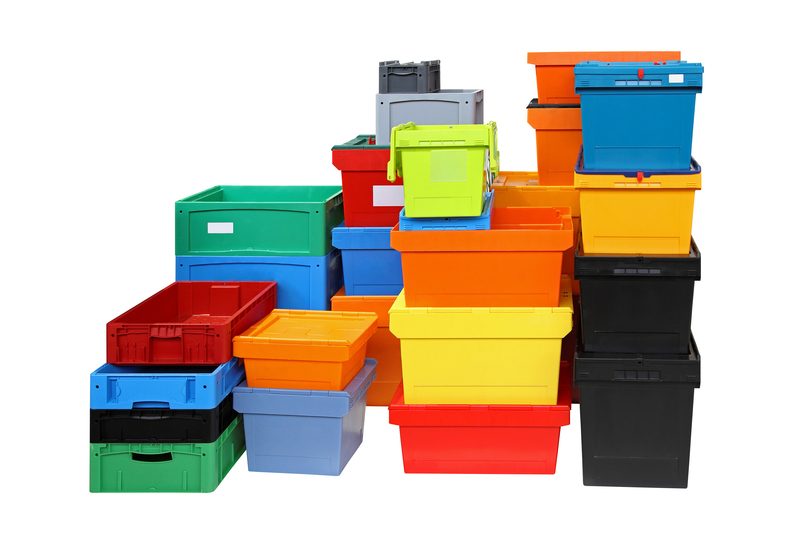Master the Art of Storing a Freezer With These Expert Tips
Optimizing your freezer storage can be transformative--not only does it save food, but it saves money, minimizes waste, and can make meal prep a breeze. Whether you're stocking up during a sale, meal planning for busy weeks, or simply love the convenience of frozen meals, becoming proficient in freezer organization is an essential household skill. Read on to master the art of storing a freezer with these expert tips for maximum efficiency, freshness, and food safety.
Why Proper Freezer Storage Matters
Effective freezer storage goes beyond tossing leftovers into the cold. It ensures your foods maintain optimal taste and texture, prevents freezer burn, and makes your meal planning stress-free.
Benefits of an Organized Freezer
- Maximizes Space: Get the most out of your freezer's capacity and avoid buying duplicate items.
- Reduces Food Waste: No more forgotten, icy blocks at the back!
- Keeps Food Fresh Longer: Proper methods minimize freezer burn and nutrient loss.
- Saves Time and Money: You'll always know exactly what's inside, so shopping and cooking become easier.
- Improves Safety: Less risk of cross-contamination and improper thawing.

Understanding Your Freezer
The journey to mastering the science of freezer storage begins with understanding the kind of freezer you have and its best practices:
- Upright Freezers: Easier to organize with shelves and drawers, great for quick access but prone to fluctuating temperatures each time you open the door.
- Chest Freezers: Offer more consistent coldness and are ideal for long-term storage, though items can get lost at the bottom if not properly organized.
- Refrigerator Freezers: Best for everyday use and frequent access but more limited in space.
Expert Tips To Master Freezer Organization
1. Map Out the Space
Start by emptying and cleaning your freezer. This is the perfect opportunity to discard any expired or unidentifiable items. Wipe down surfaces and arrange shelving and baskets for easier categorization. Dividing your freezer into zones (meats, fruits/veggies, ready-to-eat, bread, etc.) greatly improves functionality.
2. Use the Right Packaging
One key freezer storage tip is using packaging that protects food and maximizes space:
- Freezer Bags: Heavy-duty, sealable, and stackable. Always squeeze out excess air before sealing to prevent ice crystals and freezer burn.
- Plastic & Glass Containers: Ideal for soups, stews, and leftovers. Choose freezer-safe varieties and avoid overfilling--liquids expand as they freeze.
- Foil or Parchment Paper: Great for wrapping baked goods, meats, and delicate items. Double-wrap for extra protection.
- Vacuum Sealing: The gold standard for long-term freezing, vacuum sealers remove air almost entirely and keep food fresher for longer.
3. Label Everything
Labeling is a non-negotiable when it comes to freezer storage mastery. Always include:
- Item name
- Date frozen
- Estimated use-by date
This simple habit ensures that no meal is forgotten and that you follow the 'first in, first out' rule for rotation.
4. Portion for Convenience
Divide food into meal-sized portions before freezing. It's much easier to thaw exactly what you need--perfect for busy weeks, portion control, and preventing waste.
5. Know What Can and Cannot Be Frozen
To truly perfect freezer storing skills, learn which foods freeze well and which degrade in texture or taste:
- Great for Freezing: Meat, poultry, fish, bread, certain fruits and veggies, soups, stews, casseroles, cheese blocks, and baked goods.
- Not Ideal for Freezing: High-moisture fruits (watermelon, oranges), lettuce, soft cheeses (cream cheese), fried foods, or foods with high water content like cucumbers or raw potatoes.
Smart Organization Strategies for Your Freezer
Use Bins and Baskets
Clear containers and baskets keep categories together and prevent piles--no more digging to the bottom! Try dedicating bins to:
- Breakfast items: Waffles, bagels, muffin preps, breakfast burritos.
- Lunch & Dinner: Protein sources, veggies, meals in containers.
- Snacks & Sweets: Frozen fruit, cookies, ice cream.
Freeze Flat When Possible
For soups, sauces, and stews, freeze in a flat layer inside freezer bags. Once solid, they can be stored vertically "file-style"--a real space-saver!
First In, First Out (FIFO) System
Rotate your stash so the oldest food is used first. Place new additions at the back or bottom, and bring older items forward.
Create an Inventory List
Keep a running inventory taped to your freezer door, detailing:
- What's inside
- Portion sizes
- Use-by dates
Digital solutions like freezer apps can automate reminders and help you quickly locate items!
Expert Food Safety Practices
Maintain the Right Temperature
The optimal freezer temperature is 0?F (-18?C) or lower. Monitor with an appliance thermometer and avoid overloading, which can inhibit air circulation.
Cool Before Freezing
Never place hot food directly in the freezer--it raises the appliance temperature and risks bacterial growth. Cool leftovers to room temperature before packaging and freezing.
Sealing Techniques and Air Removal
Exposure to air causes freezer burn. Remove as much air from bags as possible and ensure containers are airtight. For extra protection, double-bag especially sensitive items.
Safe Thawing Practices
- In the refrigerator: Safest and maintains food integrity.
- In cold water: For quicker thawing (change water every 30 minutes).
- In the microwave: Only for immediate cooking--never refreeze thawed food unless cooked.
Top Tips for Specific Food Groups
Meat, Fish and Poultry
- Wrap tightly in plastic, foil, or freezer paper before placing in freezer bags.
- Divide into meal-sized portions and flatten for even stacking.
- If possible, vacuum seal for maximum freshness and longevity.
Fruits and Vegetables
- Blanch vegetables before freezing to preserve color and nutrients.
- Spread fruit on a tray to pre-freeze individually before transferring to bags--prevents clumping.
- Don't freeze lettuce or other watery produce--stick to heartier veggies and berries.
Baked Goods & Bread
- Wrap bread in plastic and then foil for best protection.
- Freeze muffins, cookies, and cakes in single layers before stacking.
- Reheat straight from frozen--no need to thaw many baked goods.
Dairy and Eggs
- Butter and hard cheeses freeze well when wrapped tightly.
- Milk can be frozen but may separate upon thawing--shake well.
- Raw eggs should be cracked, beaten, and stored in containers--never freeze eggs in their shells.
Common Freezer Mistakes and How to Avoid Them
- Overfilling: Limits air flow and reduces efficiency.
- Using Thin Bags: Leads to freezer burn--always opt for heavy-duty freezer bags or double-bag.
- Lack of Labels: Increases the risk of wasted, unidentifiable food items.
- Poor Organization: Encourages forgotten food, duplicate purchases, and wasted space.
- Thawing at Room Temperature: Poses safety risks--always thaw in the fridge for best results.
How to Defrost and Maintain Your Freezer
Regular freezer maintenance extends its life and keeps your food fresher:
- Manual Defrost: Unplug, empty and allow ice build-up to melt. Clean with a mild solution of baking soda and water.
- No-Frost Models: Wipe down spills and check for even cooling every few months.
- Keep It Full: A fuller freezer maintains low temperatures more efficiently. Use water bottles to fill extra space if needed.
- Check for Power Failures: If unsure how long food has thawed, the 'ice cube tip' helps--put a cup of ice in the freezer; if cubes melt into a block, the food likely thawed too.

Frequently Asked Questions About Freezer Storage
- How long can I store food in my freezer?
- Most meats last 6-12 months; bread 3 months; fruits/veggies 8-12 months; prepared meals 2-6 months.
- What is freezer burn and is it safe?
- Freezer burn is dehydration and oxidation caused by air exposure. It's safe to eat but may affect taste and texture.
- Can I refreeze food once thawed?
- Only if the food has thawed in the refrigerator and hasn't reached temperatures above 40?F (4?C).
- Should I use glass containers?
- Yes, but ensure they're freezer-safe and leave room for expansion to avoid breakage.
Conclusion: Your Freezer, Mastered
With these expert freezer storage tips, you can maximize space, save money, and enjoy higher quality meals every day. Remember--organization, proper packaging, and strategic rotation are your allies in maintaining a well-stocked freezer. Consistently applying these practices makes your freezer an energy-efficient, waste-reducing, and convenient extension of your kitchen.
Start mastering the art of storing a freezer today and watch your kitchen workflow transform!